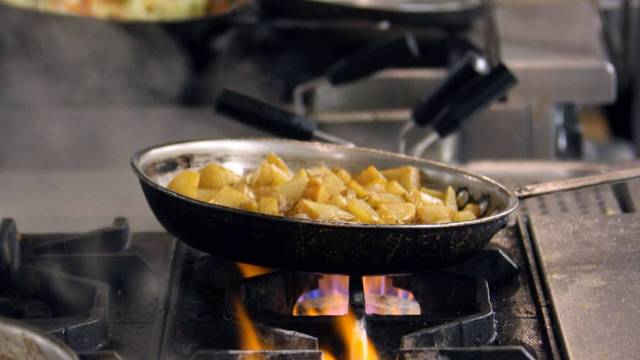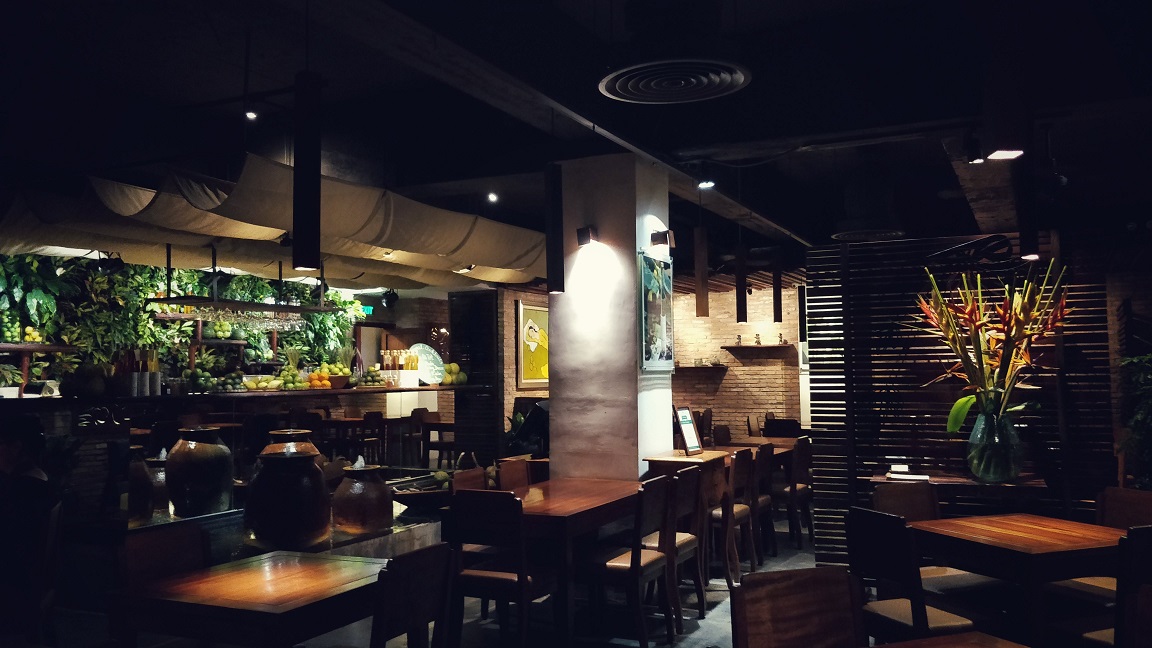Savor Authentic Oriental Food With a Pan-Asian Spin for a Cooking Journey
Starting a culinary journey through authentic Eastern cuisine, enhanced with a Pan-Asian twist, supplies an unique opportunity to check out the abundant tapestry of flavors that specify the area's varied culinary customs. This experience welcomes you to appreciate the splendid balance of preferences-- wonderful, salted, spicy, and sour-- harmonized by fragrant herbs and seasonings. Think of the cutting-edge combination of Thai curry and ramen or the unanticipated pleasure of sushi burritos. As you ponder these attracting recipes, take into consideration the cultural stories and historic influences that form them, each bite providing a tale waiting to be uncovered.

Checking Out Pan-Asian Tastes
In the realm of global gastronomy, Pan-Asian food attracts attention for its impressive diversity and the unified interaction of flavors from numerous Eastern cultures. This culinary strategy celebrates the unique active ingredients and rich practices discovered across the continent, creating a tapestry of tastes that is both satisfying and appealing. Secret to Pan-Asian cuisine is its ability to stabilize contrasting flavors-- pleasant, salted, spicy, and sour-- while highlighting the quality and quality of each ingredient.
From the umami-rich soy sauce of Japan to the intense chili peppers of Thailand, Pan-Asian cuisine provides a considerable combination of tastes. These aspects are commonly incorporated in innovative methods, enhancing dishes with layers of complexity. As an example, using great smelling herbs such as lemongrass and cilantro, typical in Vietnamese and Thai food, includes a rejuvenating illumination to dishes, while the incorporation of coconut milk provides a creamy, abundant appearance.
The emphasis on fresh fruit and vegetables and aromatic flavors makes certain that each meal is not just a banquet for the palate however likewise for the senses. Pan-Asian food invites restaurants to begin on a culinary journey, discovering the huge and differed landscapes of Asian gastronomy with every bite.
Combination Meals to Attempt
While Pan-Asian food is commemorated for its standard tastes, the modern-day culinary landscape is increasingly welcoming blend meals that mix these timeless components with influences from various other areas. This ingenious method not only honors the abundant heritage of Eastern cookeries however additionally introduces unique preference experiences that attract modern palates.
A prime example of such a combination recipe is the Korean-Mexican taco, where seasoned bulgogi beef is wrapped in a warm tortilla, topped with kimchi and a zesty gochujang-infused salsa. This combination marries the strong, mouthwatering tastes of Korea with the vibrant, fresh aspects of Mexican food. Similarly, sushi burritos have gained appeal, integrating the fragile virtuosity of Japanese sushi with the hearty, hand-held benefit of a burrito, commonly featuring combination components like tempura shrimp and avocado with a drizzle of wasabi mayo.
An additional noteworthy meal is Thai curry ramen, which instills the creamy, fragrant flavors of Thai curry right into the comforting brew of traditional Japanese ramen, creating an unified mix that tantalizes the senses. These combination recipes prolong past simple uniqueness; they stand for a cooking discussion in between societies, encouraging expedition and technology worldwide of Pan-Asian food.
Crucial Active Ingredients and Flavors
To really value Pan-Asian food, one should comprehend the vital active ingredients and spices that develop its structure. This diverse culinary design draws from an abundant tapestry of Oriental practices, employing an unified mix of flavors and appearances. Key active ingredients consist of soy sauce, fish sauce, and oyster sauce, which present a mouthwatering umami deepness necessary to Oriental meals. Corresponding to these are rice vinegar and mirin, lending a delicate acidity and sweet taste.
Fragrant aspects are critical, with lemongrass, garlic, and ginger being common throughout numerous Pan-Asian recipes. These components offer an aromatic base that enhances the complexity of flavors. Spices such as celebrity anise, cardamom, and cinnamon present warmth and personality, resembling influences from regions like China and India.

Cooking Techniques and Tips
Grasping the art of Pan-Asian food needs familiarity with its distinct cooking strategies, each contributing to the vivid tapestry of tastes this cooking practice is commemorated for. Central to these techniques is the stir-fry, a quick cooking strategy that maintains the dietary integrity and dazzling colors of ingredients. Using a wok, the stir-fry method allows for even heat distribution, essential for attaining the characteristic appearance and taste equilibrium of Pan-Asian dishes.
One more essential technique is steaming, especially prevalent in Chinese cuisine. This gentle method maintains the all-natural flavors and nutrients of active ingredients, making it perfect for fish and shellfish and vegetables. Dumplings, a precious staple, frequently take advantage of steaming, resulting in soft, delicious appearances.
Barbecuing, likewise indispensable, imparts great smoky midsts to recipes such as Oriental bulgogi or Japanese yakitori (Romantic restaurants Islamabad). This technique usually includes seasoning components, allowing more info here flavors to permeate deeply prior to cooking over an open fire or warmer
Lastly, grasping the art of balancing tastes-- pleasant, sour, salted, bitter, and umami-- is vital. Appropriately layering these aspects can elevate a recipe from common to extraordinary, providing a facility and pleasing cooking experience that personifies the significance of Pan-Asian food.
Dining Experiences Worldwide
Around the world, Pan-Asian food offers an unrivaled dining experience, commemorated for its abundant tapestry of flavors and vibrant presentations. This culinary sensation has gone beyond social limits, recording the hearts and palates of food fanatics worldwide. In cosmopolitan cities fresh York, London, and Sydney, Pan-Asian dining establishments serve as melting pots where culinary traditions from Thailand, Japan, China, and past converge, offering diners with a diverse mix of meals that highlight the region's diversity.
The worldwide allure of Pan-Asian food depends on its capability to offer both authenticity and technology. Chefs masterfully marry standard ingredients such as lemongrass, soy sauce, and miso with modern methods, causing meals that are both refreshingly brand-new and familiar. This combination permits diners to start a culinary trip that respects heritage while embracing modernity.
In addition, dining experiences are boosted via thoughtfully made atmospheres that show the principles of Pan-Asian visual appeals. From minimalist Japanese-inspired interiors to vivid Thai-themed spaces, each dining establishment provides an one-of-a-kind atmosphere that complements the cooking offerings. As an outcome, clients are not just consuming a meal yet partaking in a social experience, making Pan-Asian dining a really worldwide sensation.
Conclusion
The expedition of Pan-Asian cuisine offers an extensive understanding of the elaborate interplay of tastes and cooking customs across Asia. By accepting fusion dishes such as Thai curry ramen and sushi burritos, the cooking trip not just highlights the versatility of typical ingredients but additionally showcases cutting-edge contemporary methods. This gastronomic adventure, enhanced by vital flavors and cooking approaches, gives a special chance to value the cultural variety and culinary artistry that specify Pan-Asian cuisine on a worldwide scale.
Embarking on a culinary journey via authentic Asian food, improved with a Pan-Asian spin, uses a distinct chance to check out the rich tapestry of tastes that specify the area's varied cooking customs.In the world of worldwide gastronomy, Pan-Asian food stands out for its impressive diversity and the harmonious interaction of flavors from different Eastern cultures. Trick to Pan-Asian cuisine is its ability to stabilize contrasting tastes-- sweet, salted, spicy, and sour-- while highlighting the freshness and high quality of each active ingredient.
